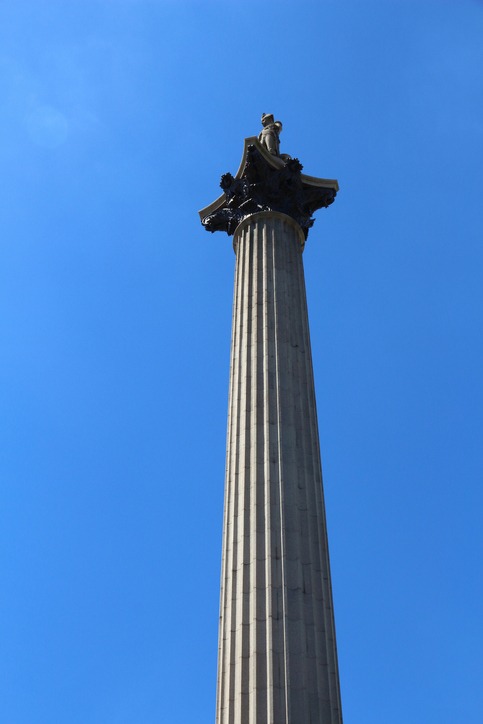Standing as the tallest Doric column in the world, the Lord’s Hill Column is one of the most renowned landmarks in Shrewsbury, Shropshire, England. It is outside Shirehall and measures 133 feet and 6 inches (40.7 meters) high, with a 17-foot (5.2 meters) statue on its top. A memorial column, it erected to honor General Rowland Lord Hill, who served during the Peninsular War and the Battle of Waterloo in England at the height of the Napoleonic Wars.
Early History
The first stone of the Lord Hill’s Column was laid on December 28, 1814, during the feast day of St. John the Evangelist. The Salopian Lodge of Free Masons did the job, with some assistance from personnel from other allied constituent lodges. It was finished on June 18, 1816, at another significant event, during the Battle of Waterloos’ first anniversary.
The column was made from Grinshill stone, a Triassic sandstone that has been locally quarried since the 12t century. It was the topmost used stone in Shropshire that has been used in many other buildings, such as the Welsh Bridge, Haughmond Abbey, and the Shrewsbury railway station. Edward Haycock Snr was the main architect, with some modifications by Thomas Harrison, specifically on the pedestal.
On the other hand, Lord Hill’s statue was made by Italian sculptor Joseph Panzetta using Lithodipyra or Coade stone, an artificial stone that became popular in the 18th and 19th centuries. It was widely utilized for modeling top-quality garden ornaments, knobs and drawer pulls, architectural works, and neoclassical statues. Some works made of Coade stone remain virtually weather-resistant until today.
The total expense for the amounted to approximately £202,831.48 at present prices. The column is 3.8 meters shorter than Gibside’s Monument to British Liberty, though it is taller if the height of the column and status is accounted for in total. Meanwhile, its diameter of 2 feet or (0.6 meters) is wider than Nelson’s column standing at Trafalgar Square at Westminster City in Central London. Lord Hill’s Column used to stand at the middle of the crossroads, but intersections are now set away from the monument.
Recent History
Lord Hill’s Column has been categorized as a Grade II structure by the English Heritage, a charity organization that handles more than 400 historic buildings, monuments, and places. With a Grade 2 listing, the column is described as a structure that is of special interest and all efforts in its preservation. As such, it is protected from being extended, altered, or demolished without the approval of the local authorities.
However, the column did not escape as it incurred damage in 2013 after a harsh winter accompanied by strong winds. Debris fell from the status and it became off-limits to the public. With its historical value and significance to Shewsbury, efforts were made to restore the column. After its restoration work, the column was opened again in 2015 during the 200th anniversary of the Battle of Waterloo.
Sadly, Lord Hill’s statue was ravaged again by heavy winds and frigid weather in 2019, though it was less serious than what happened in 2013. Restoration works were initially planned in May of 2019 but were delayed to September, and again pushed to a future date. A replacement statue is also being planned to be erected in 2022, which will celebrate Lord Hill’s 250th birth anniversary.

